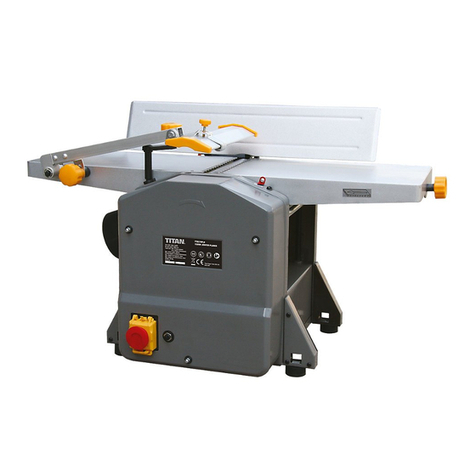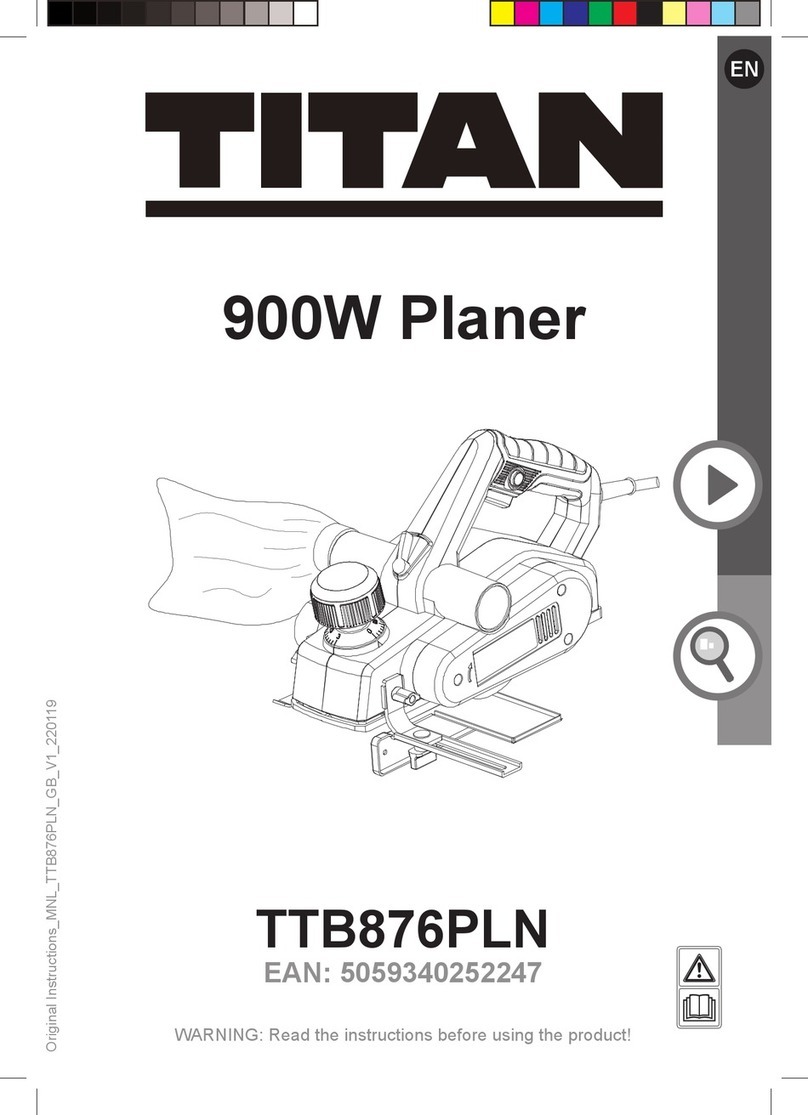
5) SERVICE
a)
This will ensure that the safety of the power tool
is maintained.
SAFETY WARNINGS FOR PLANERS
a) An exposed
rotating cutter may engage the surface leading to possible loss of control and
serious injury.
b)
Cutting a “live” wire may make exposed metal
parts of the power tool “live” and could give the operator an electric shock.
c)
Holding the workpiece by your hand or against the body
leaves it unstable and may lead to loss of control.
d) The power tool shall not be wet or applied in wet environment.
e)
nameplate of the machine.
f) Check the product, its power cord and plug as well as accessories for damage
before each use. Do not use the product if it is damaged or shows wear.
g) Be aware of kickback.
h) Turn the product off immediately, if the cutting blade gets jammed.
i) Never touch the workpiece with your hand when you are working on it.
j) Do not work overhead.
k) Ensure that the workpiece is free of foreign objects such as screws or nails.
l) Keep the handles dry to ensure safe control. Grip the product securely with
two hands so you have full control at all times.
m) Ensure that the air vents are always unobstructed and clear. Clean them if
necessary with a soft brush. Blocked air vents may lead to overheating and
damage the product.
n) Switch the product off immediately if you are disturbed while working by other
people entering the working area. Always let the product come to complete
stop before putting it down.
o) Do not overwork yourself. Take regular breaks to ensure you can concentrate
on the work and have full control over the product.
p) Always keep the power cord behind the power tool.
The following information applies to professional users only but is good practice for all
users:
ADDITIONAL SAFETY WARNINGS FOR CONSTRUCTION DUST
The updated Control of Substances Hazardous to Health Regulations 1st October
2012 now also targets to reduce the risks associated with silica, wood and gypsum
dusts.
Construction workers are one of the at-risk groups within this because of the dust that
they breathe: silica dust is not just a nuisance; it is a real risk to your lungs!
9































